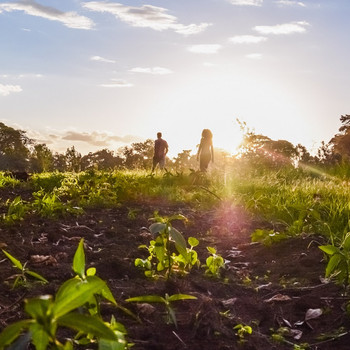The REAL cost of growing a tree
Can planting trees really be accomplished as cheaply as claimed by many organizations? Yes! Unless you want the seedlings to live.
Projects & Pricing Structures
One of the most interesting discoveries the Greenstand team has made is the similar cost of successfully planting trees across the globe (please see resources below). This process involves a lot of time and care. Seeds first need to be identified, collected, and prepared for planting. The next step is finding a piece of land for the nursery that has access to water, a great challenge in many locations. Then, farmers must begin making “growing bags” from long rolls of plastic tubing and filling them with soil and humus to improve the growing medium and thus increase the chance of the seedling growing into a healthy sapling. Once the seeds are germinated in smaller containers, they need to be transferred to the growing bags and cared for until they are ready to be planted in the ground. The long list of manual labor tasks add up as the trees become saplings.
This process typically takes around six months, and can result in an average price of $0.80 USD per tree, regardless of global location. Tree sapling cost reports from planting operations show that costs certainly go much higher, with the following ranges by country:

The True Cost of Planting a Tree
Planting the saplings at their restoration site requires transport, management, tools, and more labor, which adds up to a minimum of $0.20 per tree. This depends on many factors, such as the scale of the planting event, availability of planting tools, distance to planting sites, and road conditions. Once the saplings are in the ground, other factors affect their survival and growth: the size of the holes dug, the favorability of the planting season, weather, soil erosion, and other uncontrolled factors. All of these potential factors combined bring the price of successfully planting a tree to an absolute minimum of $0.35 USD per tree, but more commonly averaging around $1.00 to $2.00 each.
Now begins the most critical stage of a sapling's life, the first 2-3 years when the tree is vulnerable to being eaten by grazing animals, taken over by invasive species, or drying out. Greenstand's approach is to funnel more planting project revenue directly to the farmer, with the goal to ensure an average of $1.00 - $2.00 USD is actually paid to the farmer for keeping the tree alive over those first critical years. The tree steward regularly tracks the trees through the Treetracker app, which gives digital evidence that the trees are surviving and growing. As a result, the payment owed to the farmers for their service can be easily quantified and allocated.
Ultimately, the overall cost of raising a tree from a seed to an age where it has a good chance of survival easily surpasses $3.00 USD. Some tree planting operations boast that it’s possible to successfully plant a tree for significantly under $1.00, or even as low as $0.10, but the evidence does not support these claims. If compensation for a farmer to keep the tree alive after planting is considered part of the equation, then these bottom-line prices are clearly unachievable. Sustainable tree growing can only be accomplished if farmers are paid a fair wage for their acts of environmental stewardship. Otherwise they may be forced to make the choice between growing trees or cutting them down to produce incomes that will feed their families. Therefore, greater transparency is needed to support those responsible for the reforestation efforts we rely upon and transform forestation into a sustainable industry.
Conclusion
If we want a fair market around global reforestation, we must be able to accurately capture the time and resources that are invested. To accomplish this goal, the tree planting industry must make a fundamental shift in perspective from “tree planting” to “tree growing” that supports farmers and trees at every life stage. Greenstand’s Treetracker software stack not only creates transparency, but it also verifies and monetizes those impacts so that everyone from remote farming communities to wealthy corporations can directly invest in growing trees. With environmental impacts defined, we can link the tree growers to the global consumer market and have an almost limitless mechanism to fund global restoration.
Resources
Please note that much of the information in this article was taken from Greenstanders’ personal knowledge of the reforestation industry. We also consulted with various industry professionals, including some of our planting partners.
Haiti
Tree Pricing
Nursery Contact: Enel Cyril, Nursery Manager at The Haiti Tree Project
El Salvador
Tree Pricing
Bolivia
Tree Pricing
East Africa
Jon Trimarco, Director of Fairtree
Erwin Kinsey, Director of the ECHO East Africa Impact Center
India
Tree Pricing
Sydney Stokes | Communications & Marketing Intern | sydneyastokes16@gmail.com
Karen Nicolas | Treetracker Liaision | karen.nicolas@greenstand.org
Sebastian Gaertner | VP Programs | sebastian.gaertner@greenstand.org
Back
